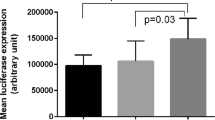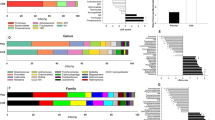Abstract
Carbonic anhydrase VI is a secreted enzyme that catalyzes the hydration of carbon hydroxide in saliva and other body fluids. This enzyme has been implicated in taste and gastrointestinal dysfunctions, tooth erosion, and caries. The purpose of this study was to analyze the allele and genotype distribution of three polymorphisms in the coding sequences of (CA6) gene and check for possible associations with salivary buffer capacity, number of decayed, missing, and filled teeth in deciduous and permanent teeth (dmft/DMFT, Decayed/Missing/Filled Teeth), plaque index (PI), and the plaque pH variation (ΔpH) in children aged 7–9 years. Two hundred and forty-five children from both genders, residents in area with fluoridated water (Piracicaba, São Paulo, Brazil) were divided into two groups: caries free and with caries. The clinical examinations were conducted by a single previously calibrated examiner (κ=0.91) in an outdoor setting using a mirror and a probe, according to WHO criteria index (dmft/DMFT). Approximately 2 h after the first daily meal, the buffer capacity (BC) and the plaque pH were analyzed by means of a pH meter and an ion selective electrode. Plaque pH was measured immediately and 5 min after a mouth rinse with a 10% sucrose solution. The data were submitted to χ2, Student's, and Mann–Whitney tests (α=0.05). The PI and ΔpH of the upper and lower teeth were significantly higher in the carious group than control (P<0.05). There was no difference between the groups in relation to BC. There was no association between the alleles and genotypes distributions for polymorphisms in the CA6 gene exons 2 and 3 and caries experience (P>0.05). There was a positive association between buffer capacity and the rs2274327 (C/T) polymorphism. The allele T and genotype TT were significantly less frequent in individuals with the highest buffer capacity (P=0.023 and 0.045, respectively). This finding encourages future studies relating CA6 gene polymorphisms and their association with malfunctions, such as taste and gastrointestinal alterations, or the differential effect of chemical modulators on the protein products originated from the distinct genotypes of the CA6 gene.
This is a preview of subscription content, access via your institution
Access options
Subscribe to this journal
Receive 6 print issues and online access
$259.00 per year
only $43.17 per issue
Buy this article
- Purchase on Springer Link
- Instant access to full article PDF
Prices may be subject to local taxes which are calculated during checkout

Similar content being viewed by others
References
Parkkila S, Kaunisto K, Rajaniemi L, Kumpulainen T, Jokinen K, Rajaniemi H . Immunohistochemical localization of carbonic anhydrase isoenzymes VI, II, and I in human parotid and submandibular glands. J Histochem Cytochem 1990; 38: 941–947.
Parkkila S, Parkkila AK, Juvonen T, Rajaniemi H . Distribution of the carbonic anhydrase isoenzymes I, II, and VI in the human alimentary tract. Gut 1994; 35: 646–650.
Ogawa Y, Toyosawa S, Inagaki T, Hong SS, Ijuhin N . Carbonic anhydrase isozyme VI in rat lacrimal gland. Histochem Cell Biol 1995; 103: 387–394.
Leinonen JS, Saari KA, Seppanen JM, Myllyla HM, Rajaniemi HJ . Immunohistochemical demonstration of carbonic anhydrase isoenzyme VI (CA-VI) expression in rat lower airways and lung. J Histochem Cytochem 2004; 52: 1107–1112.
Kimoto M, Kishino M, Yura Y, Ogawa Y . A role of salivary carbonic anhydrase VI in dental plaque. Arch Oral Biol 2006; 51: 117–122.
Leinonen J, Parkkila S, Kaunisto K, Koivunen P, Rajaniemi H . Secretion of carbonic anhydrase isoenzyme VI (CA-VI) from human and rat lingual serous von Ebner's glands. J Histochem Cytochem 2001; 49: 657–662.
Karhumaa P, Leinonen J, Parkkila S, Kaunisto K, Tapanainen J, Rajaniemi H . The identification of secreted carbonic anhydrase VI as a constitutive glycoprotein of human and rat milk. Proc Natl Acad Sci USA 2001; 98: 11604–11608.
Kaseda M, Ichihara N, Nishita T, Amasaki H, Asari M . Immunohistochemistry of the bovine secretory carbonic anhydrase isozyme (CA-VI) in bovine alimentary canal and major salivary glands. J Vet Med Sci 2006; 68: 131–135.
Henkin RI, Martin BM, Agarwal RP . Decreased parotid saliva gustin/carbonic anhydrase VI secretion: an enzyme disorder manifested by gustatory and olfactory dysfunction. Am J Med Sci 1999; 318: 380–391.
Helm JF, Dodds WJ, Pelc LR, Palmer DW, Hogan WJ, Teeter BC . Effect of esophageal emptying and saliva on clearance of acid from the esophagus. N Engl J Med 1984; 310: 284–288.
Sarosiek J, Scheurich CJ, Marcinkiewicz M, McCallum RW . Enhancement of salivary esophagoprotection: rationale for a physiological approach to gastroesophageal reflux disease. Gastroenterology 1996; 110: 675–681.
Parkkila S, Parkkila A-K, Lehtola J, Reinilä A, Södervik H-J, Rannisto M et al. Salivary carbonic anhydrase protects gastroesophageal mucosa from acid injury. Dig Dis Sci 1997; 42: 1013–1019.
Navazesh M, ADA Council on Scientific Affairs and Division of Science. How can oral health care providers determine if patients have dry mouth? J Am Dent Assoc 2003; 134: 613–620.
Bardow A, Moe D, Nyvad B, Nauntofte B . The buffer capacity and buffer systems of human whole saliva measured without loss of CO2. Arch Oral Biol 2000; 45: 1–12.
Vitorino R, Lobo MJ, Duarte J, Ferrer-Correia AJ, Tomer KB, Dubin JR et al. In vitro hydroxyapatite adsorbed salivary proteins. Biochem Biophys Res Commun 2004; 320: 342–346.
Leinonen J, Kivela J, Parkkila S, Parkkila A-K, Rajaniemi H . Salivary carbonic anhydrase isoenzyme VI is located in the human enamel pellicle. Caries Res 1999; 33: 185–190.
Kimoto M, Iwai S, Maeda T, Yura Y, Fernley RT, Ogawa Y . Carbonic anhydrase VI in the mouse nasal gland. J Histochem Cytochem 2004; 52: 1057–1062.
O'Sullivan EA, Curzon ME . Salivary factors affecting dental erosion in children. Caries Res 2000; 34: 82–87.
Kivela J, Parkkila S, Parkkila A-K, Rajaniemi H . A low concentration of carbonic anhydrase isoenzyme VI is associated with caries prevalence. Caries Res 1999; 33: 178–184.
Feldstein JB, Silverman DN . Purification and characterization of carbonic anhydrase from the saliva of the rat. J Biol Chem 1984; 259: 5447–5453.
Kadoya Y, Kuwahara H, Shimazaki M, Ogawa Y, Yagi T . Isolation of a novel carbonic anhydrase from human saliva and immunohistochemical demonstration of its related isozymes in salivary gland. Osaka City Med J 1987; 33: 99–109.
Parkkila S, Parkkila A-K, Vierjoki T, Ståhlberg T, Rajaniemi H . Competitive time-resolved immunofluorometric assay for quantifying carbonic anhydrase VI in saliva. Clin Chem 1993; 39: 2154–2157.
Kivelä J, Parkkila S, Metteri J, Parkkila A-K, Toivanen A, Rajaniemi H . Salivary carbonic anhydrase VI concentration and its relation to basic characteristics of saliva in young men. Acta Physiol Scand 1997; 161: 221–225.
Fernley RT, Farthing J, Cooper EJ . Radioimmunoassay for salivary carbonic anhydrase in human parotid saliva. Arch Oral Biol 1995; 40: 567–569.
Watson GE, Davis BA, Raubertas RF, Pearson SK, Bowen WH . Influence of maternal lead ingestion on caries in rat pups. Nat Med 1997; 3: 1024–1025.
Lee SF, Boran TL . Roles of sortase in surface expression of the major protein adhesin P1, saliva-induced aggregation and adherence, and cariogenicity of Streptococcus mutans. Infect Immun 2003; 71: 676–681.
Vitorino R, Calheiros-Lobo MJ, Duarte JA, Domingues P, Amado F . Salivary clinical data and dental caries susceptibility: is there a relationship? Bull Group Int Rech Sci Stomatol Odontol 2006; 47: 27–33.
Delgado-Angulo EK, Bernabé E . Influence of host-related risk indicators on dental caries in permanent dentition. Acta Odontol Latinoam 2006; 19: 85–92.
Varma S, Banerjee A, Bartlett D . An in vivo investigation of associations between saliva properties, caries prevalence and potential lesion activity in an adult UK population. J Dent 2008; 36: 294–299.
Farsi N, Al Amoudi N, Farsi J, Bokhary S, Sonbul H . Periodontal health and its relationship with salivary factors among different age groups in a Saudi population. Oral Health Prev Dent 2008; 6: 147–154.
Nishimori I, Innocenti A, Vullo D, Scozzafava A, Supuran CT . Carbonic anhydrase inhibitors. Inhibition studies of the human secretory isoform VI with anions. Bioorg Med Chem Lett 2007; 17: 1037–1042.
WHO. Oral Health Surveys: Basic Methods, 4th edn. World Health Organization: Geneva, 1987.
Silness J, Loe H . Periodontal disease in pregnancy. II. Correlation between oral hygiene and periodontal condition. Acta Odontol Scand 1964; 22: 121–135.
Dong YM, Pearce EI, Yue L, Larsen MJ, Gao XJ, Wang JD . Plaque pH and associated parameters in relation to caries. Caries Res 1999; 33: 428–436.
Frostell G . A colorimetric screening test for evaluation of the buffer capacity of saliva. Swed Dent J 1980; 4: 81–86.
Aidar M, Line SRP . A simple and cost-effective protocol for DNA isolation from buccal epithelial cells. Braz Dent J 2007; 18: 148–152.
Sanguineti CJ, Dias Neto E, Simpson SJ . Rapid silver staining and recovery of PCR products separated on polyacrylamide gels. Biotechniques 1994; 17: 914–921.
Bryson K, McGuffin LJ, Marsden RL, Ward JJ, Sodhi JS, Jones DT . Protein structure prediction servers at University College London. Nucleic Acids Res 2005; 33 (Web Server issue): W36–W38.
Smits DJ, De Boeck P, Verhelst ND . Estimation of the MIRID: a program and a SAS-based approach. Behav Res Methods Instrum Comput 2003; 35: 537–549.
Acknowledgements
This study was supported by CAPES/PRODOC (# 0120/05-7) and FAPESP (# 05/57649-2).
Author information
Authors and Affiliations
Corresponding author
Rights and permissions
About this article
Cite this article
Peres, R., Camargo, G., Mofatto, L. et al. Association of polymorphisms in the carbonic anhydrase 6 gene with salivary buffer capacity, dental plaque pH, and caries index in children aged 7–9 years. Pharmacogenomics J 10, 114–119 (2010). https://doi.org/10.1038/tpj.2009.37
Received:
Revised:
Accepted:
Published:
Issue Date:
DOI: https://doi.org/10.1038/tpj.2009.37
Keywords
This article is cited by
-
The role of mechanical control of biofilm in the salivary pH after sucrose exposure in children with early childhood caries
Scientific Reports (2021)
-
Variants in taste genes on caries risk and caries activity status
Medical Molecular Morphology (2020)
-
Carbonic Anhydrase 6 Gene Variation influences Oral Microbiota Composition and Caries Risk in Swedish adolescents
Scientific Reports (2019)
-
Obese Subjects With Specific Gustatory Papillae Microbiota and Salivary Cues Display an Impairment to Sense Lipids
Scientific Reports (2018)
-
Carbonic Anhydrase VI Gene Polymorphism rs2274327 Relationship Between Salivary Parameters and Dental-Oral Health Status in Children
Biochemical Genetics (2016)



